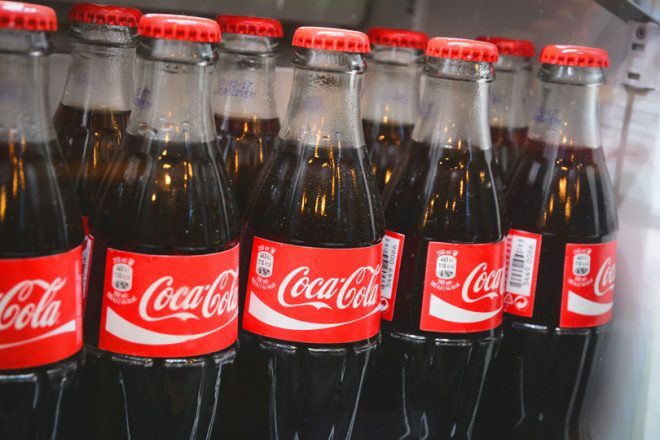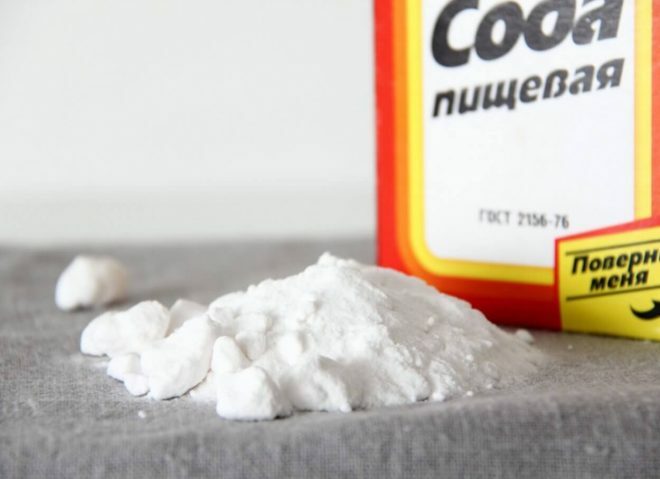How to clean a thermos from tea plaque inside? Every owner has this question someday. Even if you wash the flask well and thoroughly after use, this does not guarantee that an unpleasant dark sediment will not appear. The peculiarity of tea and the tannins contained in it is that the insoluble fractions simply have nowhere else to go, except to settle on the walls. And the longer the tea is in the thermos, the denser the film.

The reasons for the appearance of plaque
Phenols, tannins and theine alkaloid are "responsible" for the tea layers. Thanks to them, an astringent taste appears in the drink. But with a decrease in temperature, the above substances lose their ability to form a solution, and they are released in the form of an oily film. It shimmers with iridescent colors and has a pearlescent hue. In black tea, which is undesirable to brew for more than 5 minutes, more of it is formed than in green.
Attention! Earned on our website kitchen designer. You can familiarize yourself with it and design your dream kitchen for free! May also come in handy wardrobes designer.
If you continue to drink the cooled drink, the film will enter the stomach, where it will not cause any harm to the body. But when you tilt the cup or thermos (which is inevitable), the film will find itself on the walls and soon dry out.
By the way, if you regularly observe a dense plaque in a cup, drinking it hot, this is an indicator that the tea is excessively strong.
There is another version that the harder the water you use, the more dense the plaque will be. The longer the iced tea stands, the denser the film on it will become. Therefore, use spring or bottled water whenever possible.

How to clean tea plaque inside a thermos
How to clean the thermos from the tea plaque inside? There are many ways in the world, but the result depends on what material the bulb is made of. There are 2 types of them - glass or stainless steel. Glass is more fragile, but less capricious to care for.
But there is always a cleaning agent in the house, because their choice is quite wide. All of the following recipes are indicated for the most common volume of a thermos - 750 ml. If you have more dishes, increase the dose.
Vinegar, citric acid, or lemon
In this case, the acids contained in these substances "work". The only question with them - how to clean a metal thermos from tea plaque - will not be solved. Acids are quite corrosive and therefore have a negative effect on metal and even stainless steel. And the glass will have nothing.
Any vinegar (natural or synthetic), with a concentration of 6-9%, acts as a solvent. It should be placed in a thermos (one third or half), pour boiling water (or boil the entire composition), close and leave for a couple of hours. There is an option to pour the vinegar undiluted (but not the essence) for a shorter period. Acetic acid is hygroscopic and will absorb all unpleasant odors along the way. Then drain the liquid, wipe the sides of the flask and wash well.
The most environmentally friendly way than to clean a thermos of tea plaque: cut into small slices lemon, pour boiling water over it in a flask and hold it overnight. This method is also good in that the nasty aroma will also disappear.

Lemon acid - an inexpensive (along with soda) and effective way than to wash a thermos from tea plaque. Pour a couple of tablespoons (with a heap) of acid in a bowl, pour boiling water and (depending on the degree of stratification) let it stand for several hours or longer. Rinse the flask under running water and, if any stains remain, repeat the procedure again.
Baking soda
Sodium bicarbonate is used as a gentle soft abrasive in both flasks and is considered a quick way to clean the inside of a thermos. Apply baking soda to a damp kitchen sponge and scrub the walls well. If you have a deep and narrow bulb, then no fingers will reach the bottom. You can use a dish brush or a stick (for a sponge, push it deeper).
Strong or dense dirt will not succumb to soda the first time, and then another option should be applied, with soaking.
Groats
Here is the answer to the question: "How to clean a metal thermos from tea plaque?" Groats remarkably remove plaque in stainless steel flasks. Here pearl barley, peas or rice act as an eco-sponge. Having swollen from boiling water, the porridge becomes loose and cleans surfaces well. Just a few tablespoons of raw grains are enough, and to enhance the effect, add a couple of teaspoons of baking soda.
Pour boiling water over the barley, close the lid and leave for 30-60 minutes. Then shake the thermos well without opening it, and go over the walls with a sponge. Don't forget to throw the contents in the trash.
Carbonated drinks
You probably already know that Coca-Cola, Fanta or Sprite, beloved by millions of children, removes limescale from the teapot. Likewise, these undiluted cleaners remove tea build-up. Coca-Cola "works" especially well. The orthophosphoric acid contained in drinks simultaneously removes rust, is used for etching teeth in dentistry and when brazing metals.
If you change your mind about consuming this wonderful drink inside, bring it to a boil, pour it into a thermos, close the lid and leave it for a while (you can also until morning).

White
Sodium hypochlorite is a wonderful disinfectant, bleach and antibacterial agent. But use it, especially concentrated, should be used with caution. Whiteness contains corrosive chlorine, which will deal with plaque but can damage welds, rubber gaskets or corrode plastic. And you will get a clean thermos that will not fulfill its main function and keep warm. Therefore, it is impossible to pour whiteness in its pure form inside.
But by applying whiteness diluted with water (1: 1) to a sponge, you can wipe the glass flask. Thus, any musty and unpleasant odor is "won". Then the thermos should be thoroughly washed with soap and dried open for a long time. But especially sensitive noses will still smell a foreign smell for some time.
Ammonia
Ammonium is an aggressive substance with a very pungent odor. It will remove bad smell and plaque, but at the same time it can corrode a stainless steel flask with prolonged contact. With a mixture of ammonia and chalk applied to a sponge or cloth, the inner surface of a glass flask is well cleaned, the main thing is not to soak and do it quickly.

How to remove the smell
Sometimes the flask seems to be perfectly cleaned, but the unpleasant odor is still present. In this case, we can say with absolute certainty that the case is in the lid. If it is made of natural cork, it absorbs odors best. And it is necessary not only to wash the thermos from the plaque of tea, but also to periodically disinfect the cork.
- Natural cork and plastic with rubber bands can be kept in a concentrated saline solution for several hours. Natural cork is poured with hot salt solution (but not boiling water) for several minutes.
- Never leave a thermos tightly closed. Even a washed and dried flask will "suffocate" and an unpleasant odor will appear in it. The remaining few drops of moisture will lead to mold, mildew and mustiness.
- Mustard will help eliminate the smell. A large tablespoon of it should be diluted in boiling water and pour this slurry into a container. Turn the thermos horizontally and change its position several times so that the mustard touches all the sides of the flask. And you will solve 2 problems at once: how to clean the thermos inside from tea plaque and disgusting odor. Do this periodically, arranging preventive maintenance on your insulating cookware.
What can not be used to clean the thermos
How to wash a thermos inside from tea is undesirable? Chlorine based active ingredients (Domestos, Dressing Duck). They are not intended for use on food surfaces. And do not even try to use them in a metal flask. Not only is there a risk of spoiling the dishes, you will also end up with a drink with an unpleasant aftertaste.
Harsh abrasives (metal brushes, scrapers, crushed eggshells, sand) can clean the surface, but they will definitely damage the polished walls in both types of flasks.
Prevention of plaque and odors
One of the main ways to remove scale from a thermos is not to create it by drinking hot tea right away. The longer the drink is, the more plaque forms on it. The tea that stood and drank after 12 hours contains guanidine. It makes the heart beat faster, raises blood pressure and causes euphoria, which is why the infamous chifir is so loved in prisons. Remember - it is undesirable to boil already brewed tea and drink it after a few hours.
Other rules:
- use soft water
- do not leave tea for more than 15 minutes,
- do not drink yesterday's drink.
The most important prevention of unpleasant odor is the drying of the thermos. Never leave it closed or upside down to any surface. An open flask should dry completely in air and then any unpleasant odor (even from strong-smelling herbs absorbed into the walls) will not appear.
average rating 0 / 5. Number of ratings: 0
No ratings yet. Be the first to rate.



